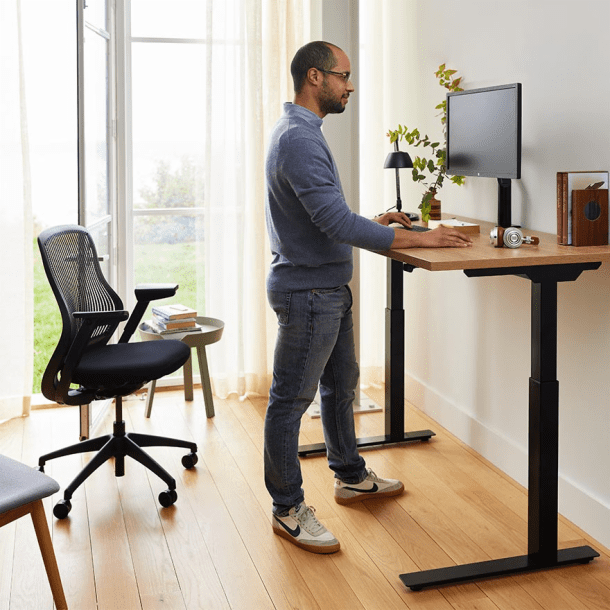Standing desks have revolutionized the way we approach workspaces, offering a dynamic alternative to the traditional sedentary office routine. While the benefits of using a standing desk are extensive, ensuring you maximize these advantages requires adhering to some essential do’s and steering clear of a few don’ts. Here’s your comprehensive guide to navigating the realm of standing desks with finesse:

The Do’s
- Gradual Transition
When starting with a standing desk, ease into the routine. Begin by standing for shorter intervals and gradually increase the duration over time. Your body needs time to adapt to the change.
- Appropriate Footwear
Wear comfortable and supportive footwear that provides adequate cushioning and arch support. Your feet will thank you for it, especially during longer standing periods.
- Proper Desk Setup
Ensure your desk and monitor are at appropriate heights. Your monitor should be at eye level, and your keyboard and mouse should be at elbow level, allowing your wrists to remain in a neutral position.
- Anti-Fatigue Mat
Invest in an anti-fatigue mat to provide cushioning and support to your feet while standing. This can alleviate discomfort during extended standing sessions.
- Movement
Avoid standing in one position for too long. Shift your weight from one leg to the other, take short walks, and incorporate gentle stretches throughout the day.
- Correct Posture
Maintain proper posture while standing. Keep your shoulders relaxed, spine aligned, and avoid slouching. Imagine a straight line from your ears to your ankles.
- Alternate Between Sitting and Standing
Don’t stand all day; balance is key. Alternate between sitting and standing to prevent strain on your muscles and joints.
The Don’ts
- Overdoing It
While standing is beneficial, excessive standing can also lead to discomfort and fatigue. Listen to your body and find the right balance for you.
- Static Position
Just like sitting for extended periods is discouraged, so is standing still for too long. Move around, shift your weight, and take short breaks.
- Leaning Excessively
Leaning on the desk or using improper support can negate the benefits of using a standing desk. Keep your weight evenly distributed between your feet.
- High Heels
Avoid wearing high heels or shoes that alter your natural posture. Opt for shoes that provide support and comfort.
- Ignoring Ergonomics
Even with a standing desk, ergonomic principles apply. Ensure your equipment is positioned correctly to prevent strain and discomfort.
- Neglecting Movement
Standing doesn’t mean you shouldn’t move. Incorporate regular movement breaks to keep your muscles engaged and blood flowing.
- Ignoring Discomfort
Discomfort or pain should never be ignored. If you experience persistent discomfort, reassess your setup and consider consulting a professional for advice.
Embracing a standing desk can significantly enhance your work experience and overall health, but it’s essential to use it wisely. By following these do’s and avoiding the don’ts, you can make the most of your standing desk journey. Remember, moderation, movement, and mindfulness are the keys to a successful standing desk experience.


